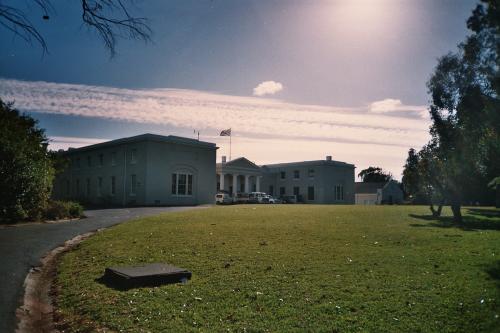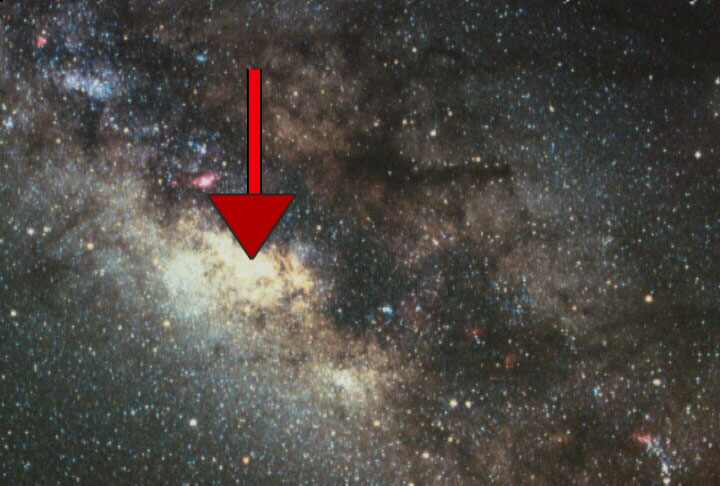|
Probing Lensing Anomalies Network
The Probing Lensing Anomalies NETwork (PLANET) collaboration coordinates a network of telescopes to rapidly sample photometric measurements of the magnification of stars in the galactic bulge undergoing gravitational microlensing by intervening foreground stars (or other compact massive objects). This network consists of five 1m-class optical telescopes distributed in longitude around the southern hemisphere in order to perform quasi-continuous round-the-clock precision monitoring. On a target-of-opportunity basis, less frequent spectroscopic measurements complement the rapid photometry for selected prime targets. Since 2005, PLANET performs a common microlensing campaign with RoboNet-1.0, a network of UK-operated 2.0m robotic telescopes. In January 2009, PLANET has merged with the MicroFUN collaboration. Telescopes For the 2006 observing season, the telescopes involved were (apart from the RoboNet telescopes): * Danish 1.54m telescope at ESO, La Silla, Chil* 1.0 meter telescop ... [...More Info...] [...Related Items...] OR: [Wikipedia] [Google] [Baidu] |
RoboNet
RoboNet-1.0 was a prototype global network of UK-built 2-metre robotic telescopes, the largest of their kind in the world, comprising the Liverpool Telescope on La Palma (Canary Islands), the Faulkes Telescope North on Maui (Hawaii), and the Faulkes Telescope South in Australia, managed by a consortium of ten UK universities under the lead of Liverpool John Moores University. For the technological aims of integrating a global network to act effectively as a single instrument, and maximizing the scientific return by applying the newest developments in e-Science, RoboNet adopted the intelligent-agent architecture devised and maintained by the eSTAR project. With the flexible scheduling and short response time of robotic telescopes being ideal for time-domain astronomy, RoboNet-1.0 had two major science goals that critically depend on these requirements: the determination of origin and nature of gamma-ray bursts, and the detection of cool extra-solar planets by means of gravitational ... [...More Info...] [...Related Items...] OR: [Wikipedia] [Google] [Baidu] |
Sutherland, Northern Cape
Sutherland is a town with about 2,841 inhabitants in the Northern Cape province of South Africa. It lies in the western Roggeveld Mountains in the Karoo. History Sutherland was founded in 1855 as a church and market town to serve the area's sheep farmers. By 1872 the town had a population of 138 registered citizens living in 19 houses. The large Dutch Reformed church in the centre of Sutherland was built in 1899. During the Anglo Boer War the church was used as a fort by garrisoned British soldiers. During the war a number of engagements between British and Boer forces occurred in the town. In one such engagement a force of 250 Boer commandos attacked the local British garrison for 10 hours. The ruins of a fort can be found on the outskirts of town on the hill called Rebelskop. This was named after this engagement. Economy Major economic activities include tourism and sheep farming. The area includes at least twelve registered B&B's, guest houses and guest farms. The ... [...More Info...] [...Related Items...] OR: [Wikipedia] [Google] [Baidu] |
South African Astronomical Observatory
South African Astronomical Observatory (SAAO) is the national centre for optical and infrared astronomy in South Africa. It was established in 1972. The observatory is run by the National Research Foundation of South Africa. The facility's function is to conduct research in astronomy and astrophysics. The primary telescopes are located in Sutherland, which is from Observatory, Cape Town, where the headquarters is located. The SAAO has links worldwide for scientific and technological collaboration. Instrumental contributions from the South African Astronomical Observatory include the development of a spherical aberration corrector and the Southern African Large Telescope (SALT). The Noon Gun on Cape Town's Signal Hill is fired remotely by a time signal from the Observatory. History The history of the SAAO began when the Royal Observatory at the Cape of Good Hope was founded in 1820, the first scientific institution in Africa. Construction of the main buildings was complet ... [...More Info...] [...Related Items...] OR: [Wikipedia] [Google] [Baidu] |
Perth Observatory
The Perth Observatory is the name of two astronomical observatory, observatories located in Western Australia (WA). In 1896, the original observatory was founded in West Perth, Western Australia, West Perth on Mount Eliza (Western Australia), Mount Eliza overlooking the city of Perth (obs. code IAU code#319, 319). Due to the city's expansion, the observatory moved to Bickley, Western Australia, Bickley in 1965. The new Perth Observatory is sometimes referred to as Bickley Observatory (obs. code IAU code#322, 322, IAU code#323, 323). History First Perth Observatory The original Perth Observatory was constructed in 1896 and was officially opened in 1900 by John Forrest, the first premier of Western Australia. The observatory was located at Mount Eliza, Western Australia, Mount Eliza overlooking the city of Perth, Western Australia, Perth. Its chief roles were keeping Standard Time for Western Australia and meteorological data collection. The observatory dome was demolished in ... [...More Info...] [...Related Items...] OR: [Wikipedia] [Google] [Baidu] |
La Silla Observatory
La Silla Observatory is an astronomy, astronomical observatory in Chile with three telescopes built and operated by the European Southern Observatory (ESO). Several other telescopes are located at the site and are partly maintained by ESO. The observatory is one of the largest in the Southern Hemisphere and was the first in Chile to be used by ESO. The La Silla telescopes and instruments are located 150 km northeast of La Serena, Chile, La Serena at the outskirts of the Chilean Atacama Desert, one of the driest and most remote areas of the world. Like other observatories in this geographical area, La Silla is located far from sources of light pollution and, like the Paranal Observatory, home to the Very Large Telescope, it has one of the darkest night skies on the Earth. History Following the decision in 1963 to approve Chile as the site for the ESO observatory, scouting parties were sent to various locations to assess their suitability. The site that was decided upon was ... [...More Info...] [...Related Items...] OR: [Wikipedia] [Google] [Baidu] |
European Southern Observatory
The European Organisation for Astronomical Research in the Southern Hemisphere, commonly referred to as the European Southern Observatory (ESO), is an intergovernmental organization, intergovernmental research organisation made up of 16 member states for ground-based astronomy. Created in 1962, ESO has provided astronomers with state-of-the-art research facilities and access to the southern sky. The organisation employs about 730 staff members and receives annual member state contributions of approximately €162 million. Its observatories are located in northern Chile. ESO has built and operated some of the largest and most technologically advanced telescopes. These include the 3.6 m New Technology Telescope, an early pioneer in the use of active optics, and the Very Large Telescope (VLT), which consists of four individual 8.2 m telescopes and four smaller auxiliary telescopes which can all work together or separately. The Atacama Large Millimeter Array observes the un ... [...More Info...] [...Related Items...] OR: [Wikipedia] [Google] [Baidu] |
The Elizabeth Telescope
''The'' () is a grammatical article in English, denoting persons or things already mentioned, under discussion, implied or otherwise presumed familiar to listeners, readers, or speakers. It is the definite article in English. ''The'' is the most frequently used word in the English language; studies and analyses of texts have found it to account for seven percent of all printed English-language words. It is derived from gendered articles in Old English which combined in Middle English and now has a single form used with pronouns of any gender. The word can be used with both singular and plural nouns, and with a noun that starts with any letter. This is different from many other languages, which have different forms of the definite article for different genders or numbers. Pronunciation In most dialects, "the" is pronounced as (with the voiced dental fricative followed by a schwa) when followed by a consonant sound, and as (homophone of pronoun ''thee'') when followed by a v ... [...More Info...] [...Related Items...] OR: [Wikipedia] [Google] [Baidu] |
MicroFUN
The Microlensing Follow-Up Network (μFUN, pronounced "micro-fun") is an informal group of observers who monitor high magnification gravitational microlensing events in the Milky Way's Galactic Bulge. Its goal is to detect extrasolar planets via microlensing of the parent star by the planet. μFUN is a follow-up network - they monitor microlensing events identified by survey groups such as OGLE and Microlensing Observations in Astrophysics (MOA). In January 2009, μFUN merged with the Probing Lensing Anomalies NETwork (PLANET). Organizations like μFUN provide a forum and a listserv for instant notification to amateur and professional astronomers all over the globe, so that microlensing events can be mined for all the information that can be gathered. Thus, amateur astronomers have a useful role in significant discoveries, as well as a clear and democratic path to authorship on any peer-reviewed scientific publications that result. Microlensing Gravitational lensing is an effec ... [...More Info...] [...Related Items...] OR: [Wikipedia] [Google] [Baidu] |
Spectroscopic
Spectroscopy is the field of study that measures and interprets the electromagnetic spectra that result from the interaction between electromagnetic radiation and matter as a function of the wavelength or frequency of the radiation. Matter waves and acoustic waves can also be considered forms of radiative energy, and recently gravitational waves have been associated with a spectral signature in the context of the Laser Interferometer Gravitational-Wave Observatory (LIGO) In simpler terms, spectroscopy is the precise study of color as generalized from visible light to all bands of the electromagnetic spectrum. Historically, spectroscopy originated as the study of the wavelength dependence of the absorption by gas phase matter of visible light dispersed by a prism. Spectroscopy, primarily in the electromagnetic spectrum, is a fundamental exploratory tool in the fields of astronomy, chemistry, materials science, and physics, allowing the composition, physical structure and elec ... [...More Info...] [...Related Items...] OR: [Wikipedia] [Google] [Baidu] |
Telescopes
A telescope is a device used to observe distant objects by their emission, absorption, or reflection of electromagnetic radiation. Originally meaning only an optical instrument using lenses, curved mirrors, or a combination of both to observe distant objects, the word ''telescope'' now refers to a wide range of instruments capable of detecting different regions of the electromagnetic spectrum, and in some cases other types of detectors. The first known practical telescopes were refracting telescopes with glass lenses and were invented in the Netherlands at the beginning of the 17th century. They were used for both terrestrial applications and astronomy. The reflecting telescope, which uses mirrors to collect and focus light, was invented within a few decades of the first refracting telescope. In the 20th century, many new types of telescopes were invented, including radio telescopes in the 1930s and infrared telescopes in the 1960s. Etymology The word ''telescope'' was coine ... [...More Info...] [...Related Items...] OR: [Wikipedia] [Google] [Baidu] |




.png)


